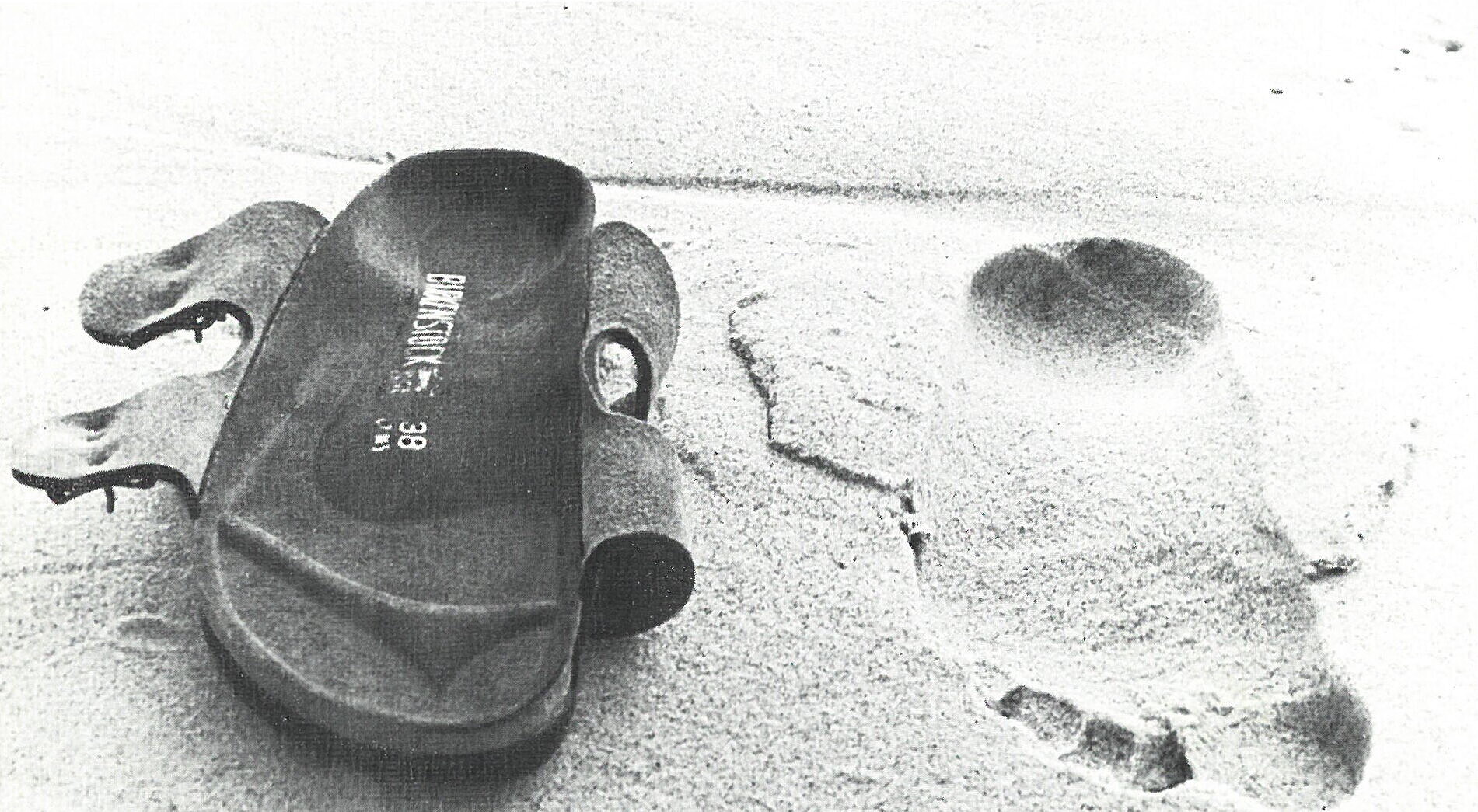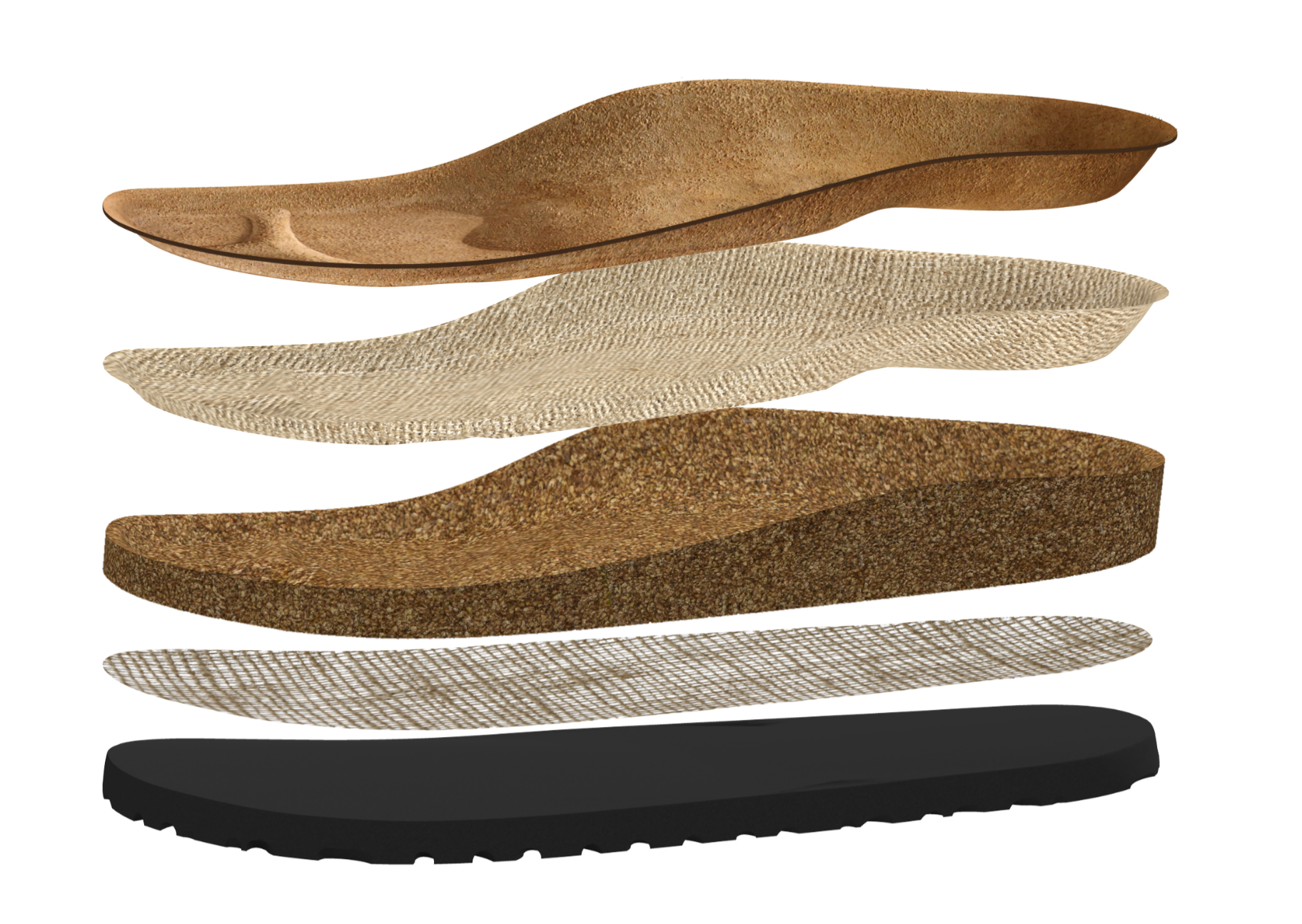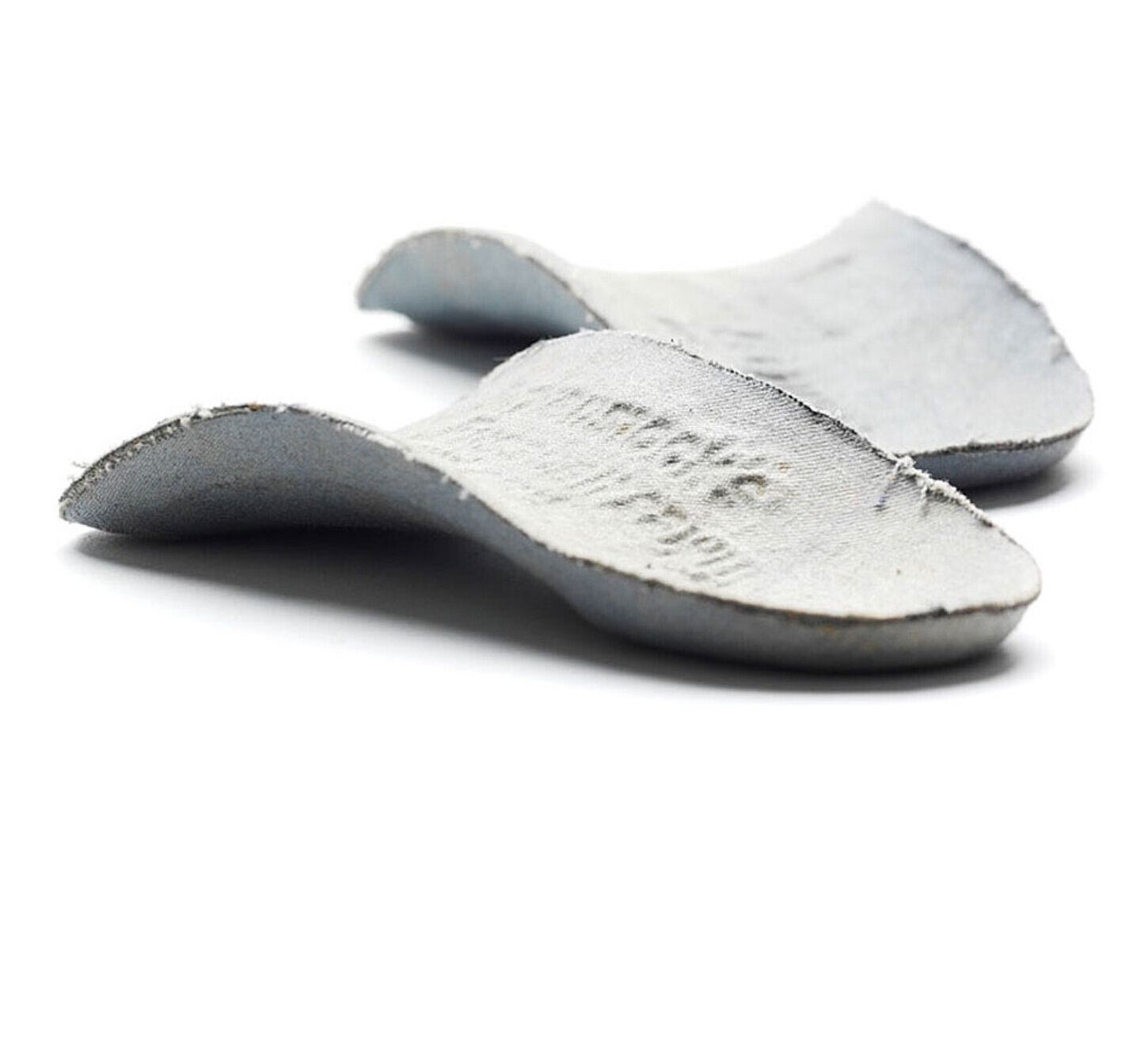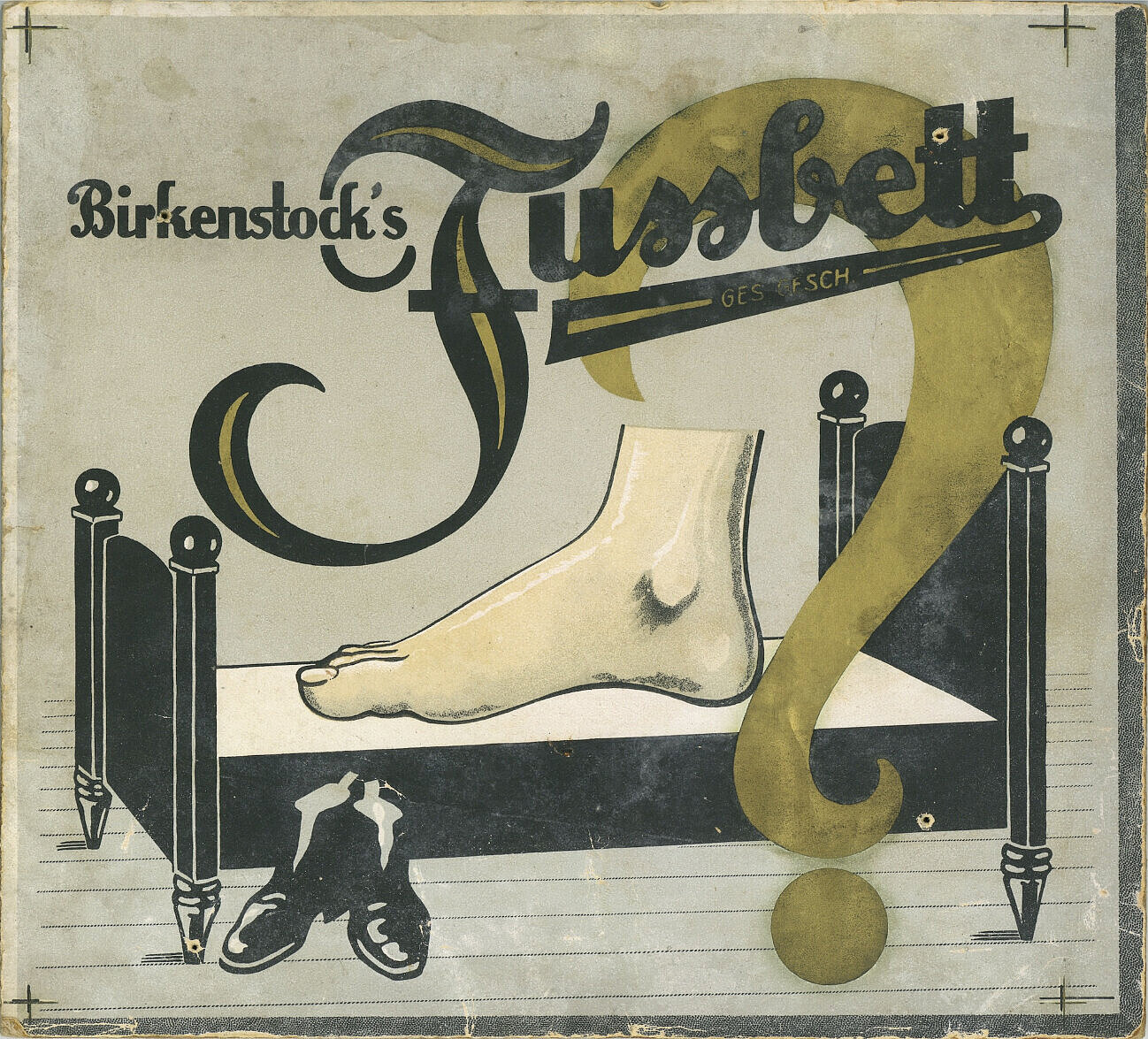Konrad Birkenstock spent close to 25 years working on the footbed. In Frankfurt am Main in 1902, he invented a three-dimensional insole to complement the anatomically shaped last he had previously developed. Together, they formed his “health footwear,” which represented a revolution in shoemaking.
However, the material used – a mixture of card and leather – was not suitable for the orthopedic shoemaker’s objectives. It wasn’t flexible or elastic enough and, what’s more, it was very heavy. He therefore spent every spare minute in his workshop testing other materials. And in 1913, he came up with a new material mix consisting of tar, rubber and the first small amounts of cork. Tar and rubber made the insole more flexible, while cork made it lighter. Konrad Birkenstock offered four different flexible insoles, two of which under the name “Fussbett.”
The challenge lay in the need for the footbed to support the anatomy of the foot, unlike the customary shoe insoles, which were not anatomically shaped. Birkenstock’s insoles and footbeds therefore supported the foot’s natural walking motion by flexibly following the foot’s movements, while simultaneously continuing to support the arches.
Although some orthopedists were impressed and many customers were delighted, the spread of the flexible insole was slow and, in medical circles in particular, wasn’t able to compete with the metal insoles used primarily for healing purposes. In 1902, his idea was ahead of its time. Birkenstock’s footbed was therefore not recognized as a remedy until 1914. This was followed in 1924 by a gold medal at an orthopedists’ symposium. Although Konrad Birkenstock had been using the word “Fussbett” for his two insoles since 1909, a shoemaker in Leipzig, Ferdinand Schmeling, registered it as a trademark on December 5, 1913.
It is not known how the gruff Konrad Birkenstock succeeded in coming to an agreement with the rights holder, but Schmeling allowed him to use the trademark until 1924, when the Leipzig colleague canceled his trademark registration and Konrad Birkenstock himself registered the trademark.



